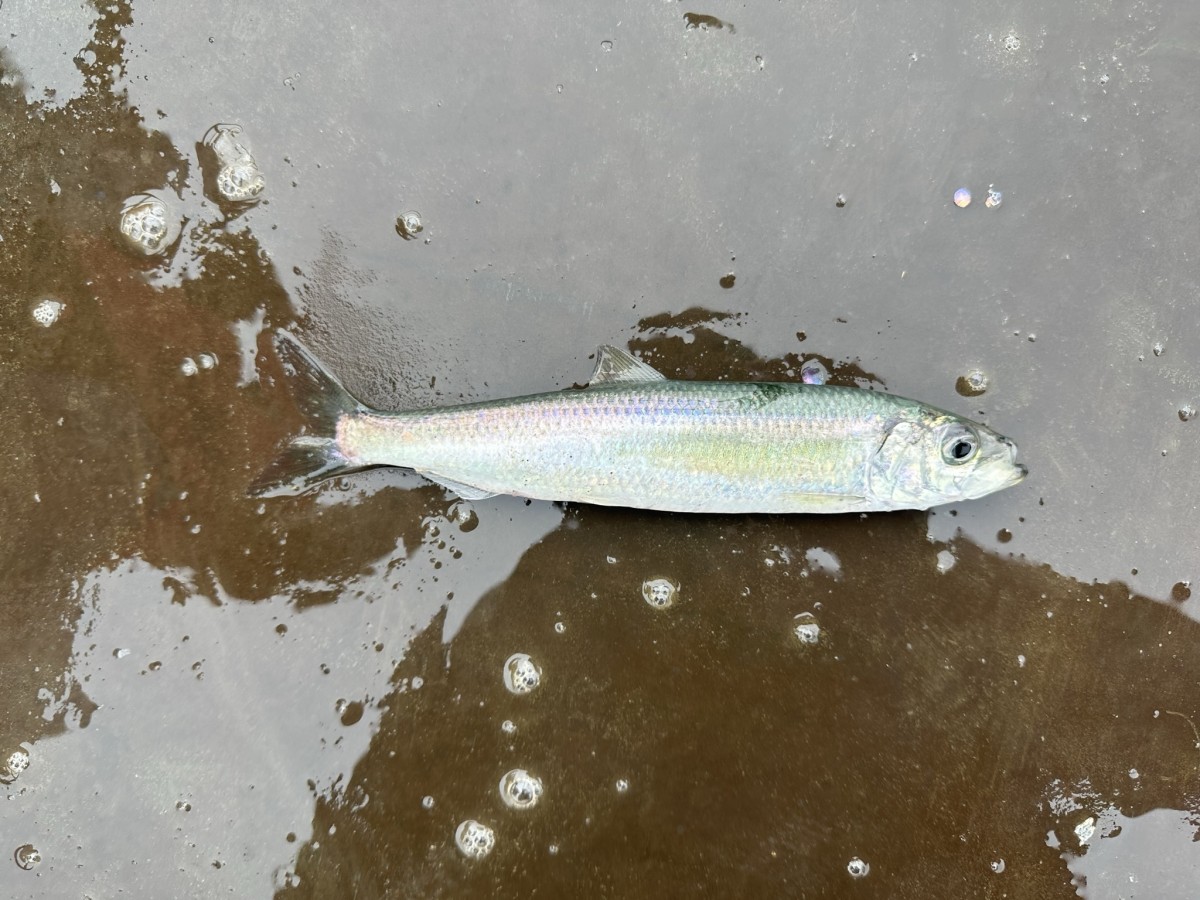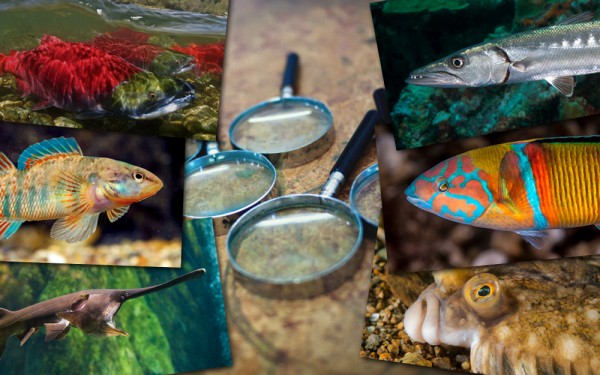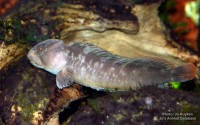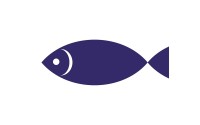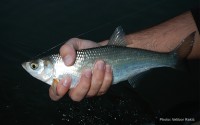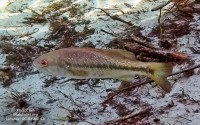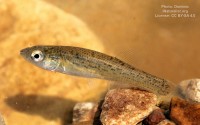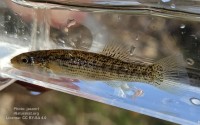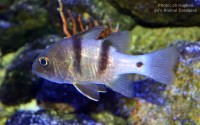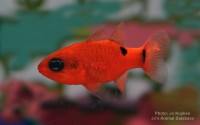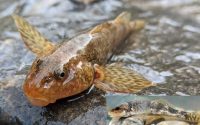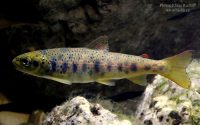Pacific herring
(Clupea pallasii)
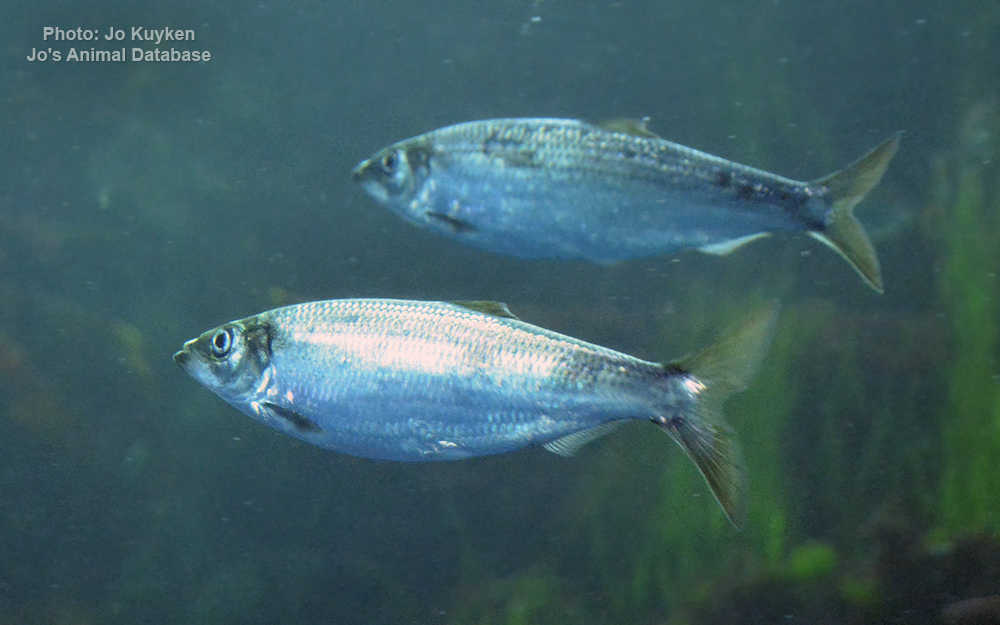
Image source: Jo's Animal Database
Classification
General data
The Pacific herring (Clupea pallasii) is a species of the herring family associated with the Pacific Ocean environment of North America and northeast Asia. It is a silvery fish with unspined fins and a deeply forked caudal fin.
The distribution is widely along the California coast from Baja California north to Alaska and the Bering Sea; in Asia the distribution is south to Japan, Korea, and China.
Clupea pallasii is considered a keystone species because of its very high productivity and interactions with many predators and prey.
Pacific herring spawn in variable seasons, but often in the early part of the year in intertidal and sub-tidal environments, commonly on eelgrass, seaweed or other submerged vegetation; however, they do not die after spawning, but can breed in successive years. According to government sources, the Pacific herring fishery collapsed in the year 1993, and is slowly recovering to commercial viability in several North American stock areas. The species is named for Peter Simon Pallas, a noted German naturalist and explorer.
There are disjunct populations of Clupea pallasii in North-East Europe, which are often attributed to separate subspecies Clupea pallasii marisalbi (White Sea herring) and Clupea pallasii suworowi (Chosha herring).
Pacific herring have a bluish-green back and silver-white sides and bellies; they are otherwise unmarked. The silvery color derives from guanine crystals embedded in their laterals, leading to an effective camouflage phenomenon. There is a single dorsal fin located mid-body and a deeply forked tail-fin. Their bodies are compressed laterally, and ventral scales protrude in a somewhat serrated fashion. Unlike other genus members, they have no scales on heads or gills; moreover, their scales are large and easy to extract.
This species of fish may attain a length of 45 centimeters in exceptional cases and weigh up to 550 grams, but a typical adult size is closer to 33 centimeters.
The fish interior is quite bony with oily flesh.
This species has no teeth on the jawline, but some are exhibited on the vomer. Pacific herring have an unusual retinal morphology that allows filter feeding in extremely dim lighting environments. This species is capable of rapid vertical motion, due to the existence of a complex nerve receptor system design that connects to the gas bladder.
Pacific herring prefer spawning locations in sheltered bays and estuaries. Along the American Pacific Coast, some of the principal areas are San Francisco Bay, Richardson Bay, Tomales Bay and Humboldt Bay. Adult males and females make their way from the open ocean to bays and coves around November or December, although in the far north of the range, these dates may be somewhat later. Conditions that trigger spawning are not altogether clear, but after spending weeks congregating in the deeper channels, both males and females will begin to enter shallower inter-tidal or sub-tidal waters. Submerged vegetation, especially eelgrass, is a preferred substrate for oviposition. A single female may lay as many as 20,000 eggs in one spawn following ventral contact with submerged substrates. However, the juvenile survival rate is only about one resultant adult per ten thousand eggs, due to high predation by numerous other species.
The precise staging of spawning is not understood, although some researchers suggest the male initiates the process by release of milt, which has a pheromone that stimulates the female to begin oviposition. The behavior seems to be collective so that an entire school may spawn in the period of a few hours, producing an egg density of up to 6,000,000 eggs per square meter. The fertilized spherical eggs, measuring 1.2 to 1.5 millimeters in diameter, incubate for approximately ten days in estuarine waters that are about 10 degrees Celsius. Eggs and juveniles are subject to heavy predation.
